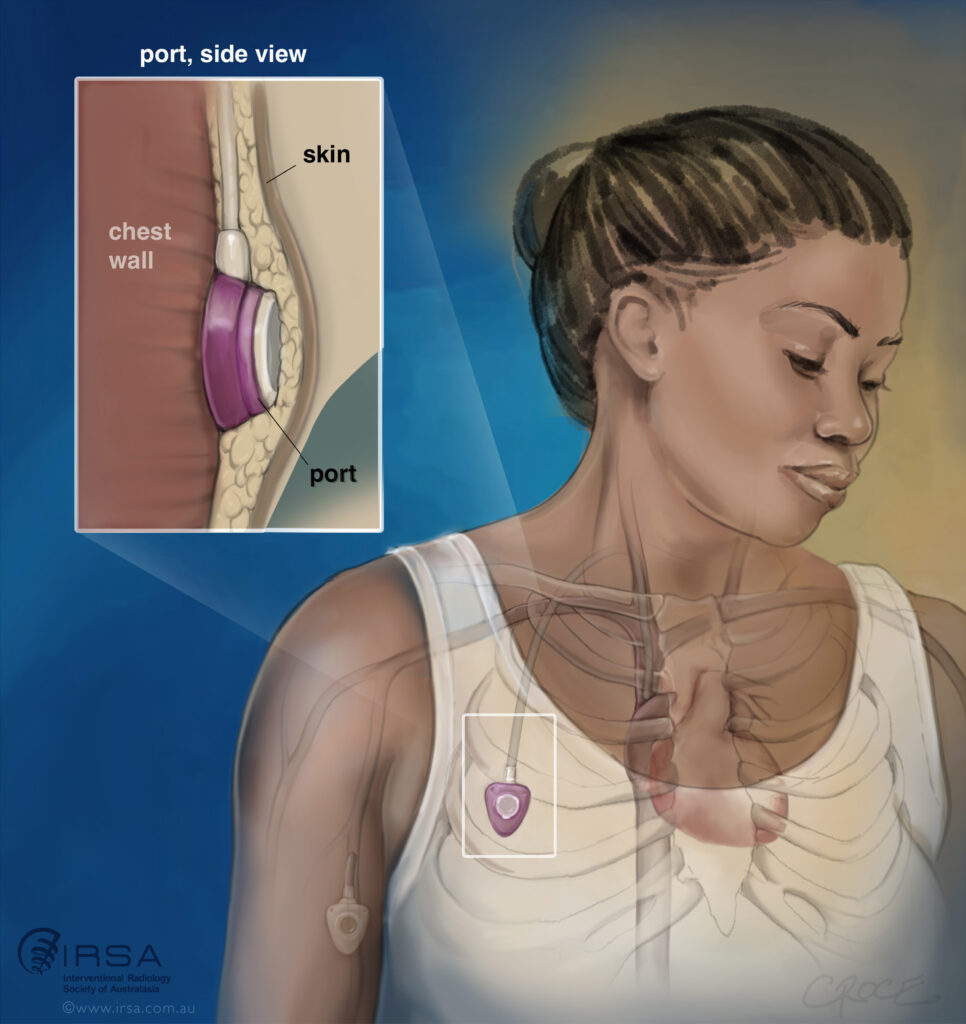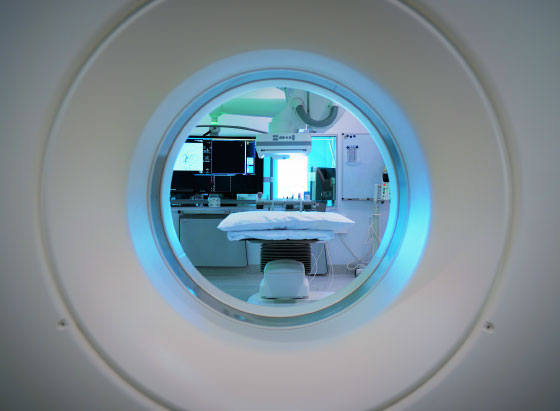WHAT IS PORT PLACEMENT?
A port is a small medical implant that is inserted beneath your skin. It consists of a reservoir compartment (the port) with a silicone diaphragm that provides a watertight seal around the area where a needle is inserted. A catheter (plastic tube) which sits under the skin connects the port to a vein in the base of your neck.
WHY WOULD MY DOCTOR REFER ME TO HAVE THIS PROCEDURE?
Portal placement is done when long term IV (intra-venous) access is needed in the following situations:
- To deliver chemotherapy to cancer patients
- To deliver coagulation factors in patients with severe haemophilia
- To withdraw blood in patients who require frequent blood tests
- To deliver antibiotics for long periods of time, or frequently
- Delivering medications to patients with immune disorders
- To administer analgesics to patients with chronic pain, such as cancer patients and those with sickle-cell disease

Wondering If You Qualify
for PORT PLACEMENT?
How do I prepare for the procedure?
You will be advised to avoid solid food from midnight before your procedure. However, you will be able to take usual medications with a small amount of water in the morning before your procedure. If you are on aspirin, Warfarin or Plavix, check with your own doctor to see if these can be stopped for a few days. You can resume these medications the day after insertion. Insertion is best delayed if you have active infection.
What happens during the procedure
The procedure is performed in an angiography suite of the radiology department with the aid of imaging guidance. The actual procedure takes approximately 30 minutes and is performed under local anaesthetic and you may also be given intravenous sedation to make the local anaesthetic injection less painful and remove any anxiety.
There will be a small 3cm-long skin incision on your chest wall for the port pocket and a 5mm incision at the insertion point in your lower neck so that the port tubing can enter the vein.
Absorbable sutures are most often used for the chest incision and are buried under the skin. Sutures are often not required for the small neck access point which is normally a few mm.

What is the recovery
normally like?
You should be able to go home about 2 hours after your procedure once you have recovered from sedation. You should arrange for someone to take you home, as you are not able to drive or operate machinery for 24 hours.
What are the risks?
With modern imaging guidance, the risk of the procedure itself is minimal. There are theoretical risks of blood vessel injury, wound infection, bruising and haematoma formation, and the remote chance of allergic reaction to the X-ray dye and drugs used during the procedure or air entering the vein which can be serious.
What are the benefits?
Once a port is inserted it can stay in for months or even years if it is cared for properly.
HOW DO I CARE FOR MY PORT PLACEMENT?
The area where your port was placed must be checked regularly for signs of infection and other problems. Always wash your hands with soap and water before touching the port site or the area around
it, as this helps prevent infection. Ask your doctor for written directions about caring for the port site (which includes cleaning your skin and changing the bandage while your port site heals), and information about hand hygiene. Once your port site heals, you will not need a bandage to cover the site.
In the first week, you should avoid strenuous exercise involving the chest area and avoid fully submerging the port site, though you can shower and pat the dressing dry. Once fully healed, you can resume all normal activity including exercise and swimming.
Find a Doctor
Our Doctor Finder is a comprehensive database of interventional radiologists practicing in Australasia.
Use the search fields to search based on geographic location or by area of practice.
